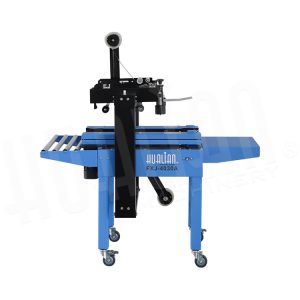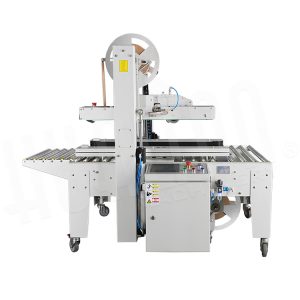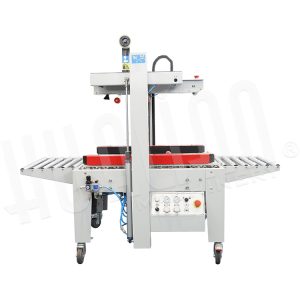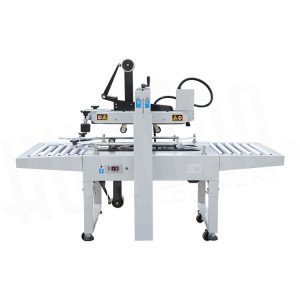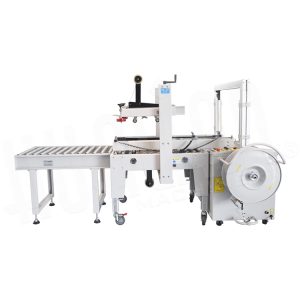Table of Contents
ToggleIntroduction
Vacuum packaging has become a widely adopted method for preserving food, not just in households but across the industrial food sector as well. With the increasing emphasis on reducing food waste, extending shelf life, and maintaining food quality, vacuum packaging machines for food are now found in homes, commercial kitchens, supermarkets, and food processing plants. Whether you’re a home cook using a countertop machine to vacuum pack food or a manufacturer relying on industrial vacuum packaging, understanding the key benefits of this technology is essential.
In this blog, we’ll explore six major benefits of vacuum packaging and why this method continues to gain popularity among both domestic users and industry professionals.
Learn More: How Do Vacuum Packaging Machine Work?
Learn More: How Long Will Vacuum Packed Food Last?
What are the 6 Benefits of Vacuum Packaging?

| Benefit | Description | Related Keywords |
|---|---|---|
| Preserve Food | Extends shelf life by removing oxygen, preventing mold and bacteria growth. Meat can last 2–3 years when vacuum sealed. | vacuum machines for food, meat vacuum packer |
| Protect from Freezer Burn | Prevents air contact and ice crystal formation, maintaining flavor and texture. | food vacuum packaging machine |
| Saves Money | Allows bulk purchases and reduces food spoilage, making food storage more cost-effective. | vacuum packages, machine to vacuum pack food |
| No Chemicals Needed | Keeps food fresh naturally, without additives or preservatives. | advantages of vacuum packaging |
| Keeps Food Safe | Creates a sterile, oxygen-free barrier to prevent contamination and bacterial growth. | industrial vacuum packaging, food vacuum packers |
| Improved Organisation | Saves space and improves visibility in fridges and freezers for efficient food management. | food vacuum packers, vacuum machines for food |
Preserve Food
One of the main advantages of vacuum packaging is its ability to significantly extend the shelf life of food. By removing air—especially oxygen—from the packaging, vacuum machines for food prevent the growth of mold, bacteria, and other microorganisms. For example, meat vacuum packers can keep frozen meat fresh for up to 2–3 years, compared to just 6 months with regular freezing. Similarly, cheeses, fruits, and vegetables can retain their quality for much longer when vacuum-sealed.
Protect Food from Freezer Burn
Freezer burn happens when food is exposed to air and forms ice crystals, which leads to dehydration and loss of texture and flavor. Using a food vacuum packaging machine creates an airtight barrier that prevents moisture from escaping. This ensures your food maintains its original taste and texture—even after long periods in the freezer.
Saves Money
Vacuum sealing allows you to buy in bulk and portion out food for future use, reducing frequent trips to the store and overall food costs. By minimizing spoilage and extending freshness, you’re less likely to throw food away. Whether you’re sealing leftovers or bulk meat purchases, vacuum packages make food storage more efficient and cost-effective, especially for families and food businesses.
No Chemicals Needed
Unlike other preservation methods that often rely on additives or artificial preservatives, vacuum packaging is a clean and natural way to protect food. It gives consumers and businesses full control over what goes into their food. Fresh produce can be packed without unwanted chemicals, making vacuum sealing an excellent choice for health-conscious individuals and organic food suppliers.
Keeps Food Safe
Food safety is a top concern, especially in large-scale food handling environments. Vacuum packaging helps reduce the risk of contamination by sealing food in a sterile, oxygen-free environment. This not only prevents bacterial growth but also protects food from external contact or cross-contamination. In the food service and processing industries, industrial vacuum packaging is essential for complying with food safety regulations and ensuring consumer trust.
Improved Organisation
Vacuum-sealed food takes up less space and can be easily stacked or stored in a more organized way. Whether in a home kitchen or a commercial freezer, using food vacuum packers makes it easier to keep track of food items. Clear, flat vacuum bags allow for better visibility and categorization, helping you stay organized and reduce food waste through smarter storage.
Conclusion

From preserving freshness to enhancing food safety, vacuum packaging offers multiple benefits for both home users and commercial operations. As the demand for efficient and hygienic food storage continues to grow, investing in a quality machine to vacuum pack food is becoming a smart move for anyone handling perishable items.
Whether you’re managing weekly meals at home or operating a high-volume food production line, the benefits of vacuum packaging are clear: longer shelf life, better food quality, increased savings, and improved safety.
If you’re considering adopting this technology, explore our range of food vacuum packaging machines and discover how vacuum sealing can transform your approach to food storage.









